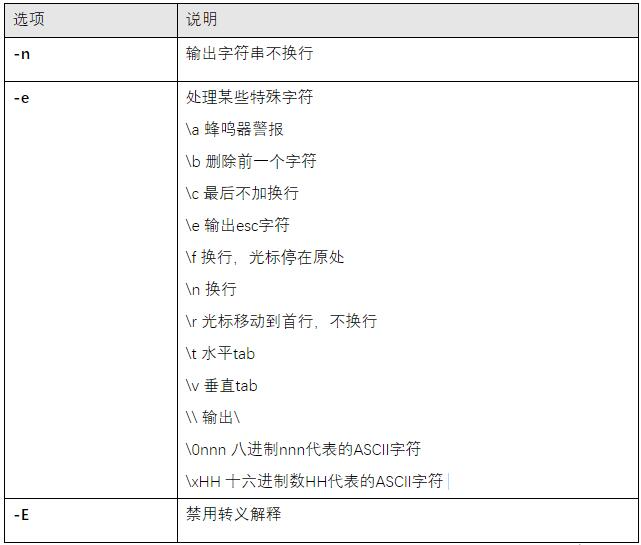
The process of learning the Linux operating system can be a bit confusing, especially for beginners. However, if you know some basic Linux commands, you can gradually enter this field and improve your knowledge step by step. The echo command is one of the most basic commands in Linux and its function is also very powerful. In this article, we will take you through an in-depth understanding of echo command and its application in Linux operating system.
The echo command can output content to the standard output, split the string with whitespace, and add a newline after it. Applicable scope of this command: RedHat, RHEL, Ubuntu, CentOS, Fedora.
echo [-neE] [arg ...]
Option list

Use "\f" to wrap the line
[root@localhost ~]# echo -e "hello\fworld" //必须使用-e选项,\f换行之后,光标还在结尾 hello world [root@localhost ~]#
Use "\n" to wrap the line
[root@localhost ~]# echo -e "hello\nworld" //必须使用-e选项,\n换行之后,光标在开头 hello world [root@localhost ~]#
Output ascii characters
[root@localhost ~]# echo -e "\x31" //十六进制的31,换算成49,代表的ascii字符就是1 1 [root@localhost ~]#
In this article, we introduce in detail how to use the echo command and some common parameters. By mastering the echo command, you can not only output text, variables and specify newlines in the terminal, but also splice strings, create files, and more. We believe that after you master these basic operations, you will become more familiar with the Linux operating system and can work more efficiently.
The above is the detailed content of Getting started with basic Linux operations using the echo command. For more information, please follow other related articles on the PHP Chinese website!




